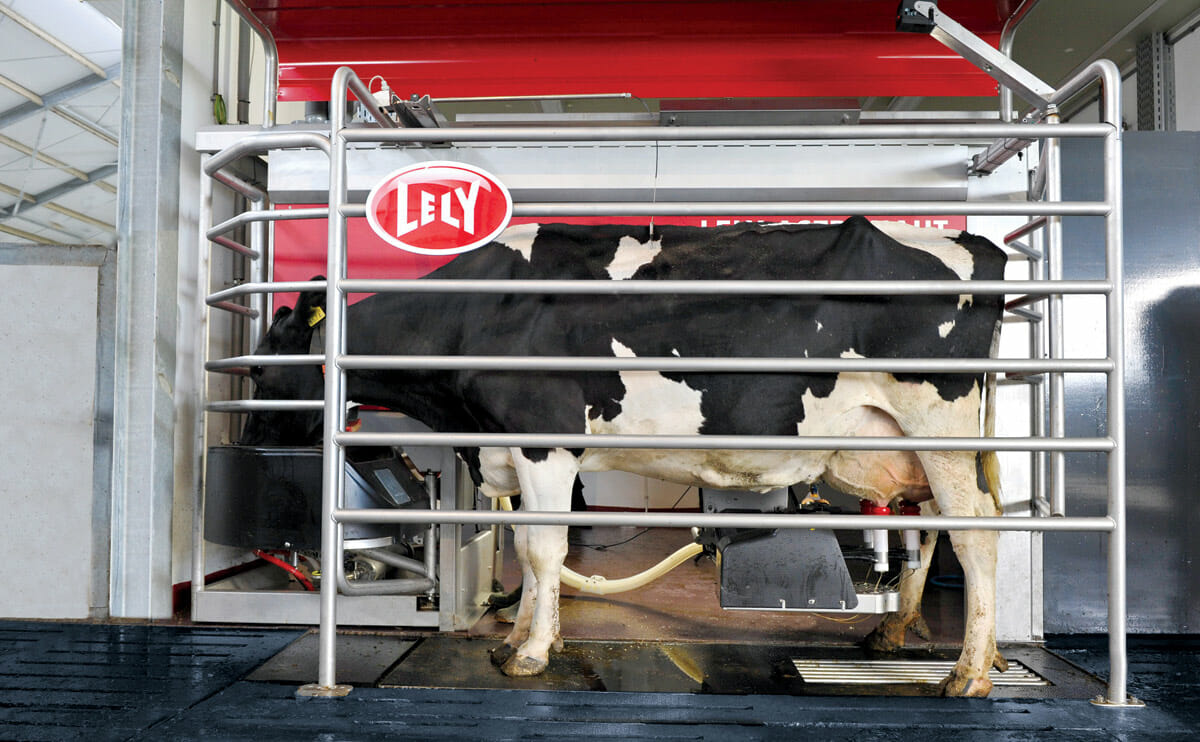Dairy cows never take a day off. That means dairy farmers had to keep a similar work schedule -- until robotic milking came along.

Although robotic milking technology has been around for about 20 years, it’s recently become more advanced and widely used. The Astronaut A4 is the latest generation of robotic milker from agricultural technology company Lely, and it’s a bit like if Isaac Asimov imagined a cow milking machine. It uses lasers to determine the cow’s exact position, and it requires no human intervention during the entire milking process. This frees up dairy farmers to do, well, anything else but milk.
Viewed from the outside, the Astronaut A4 is a large box with metal bars on one side big enough for a cow to walk through. There’s a trough where cows are given a measured amount of food, to keep the each member on on a regular, individually-controlled diet. When the cow walks in, the A4 scans a collar on the cow and stores relevant data, such as her milk production and feeding habits. This information is available to the farmer.
A robotic arm mounted with lasers scans the cow. The robot then pinpoints the cow’s teats, attaches four teat cups, and begin milking. A video camera above tracks the movement of the cow — if she moves, the robotic arm will move with her.
After milking the cow is done, the A4 is still working. The milk that flows through the system is analyzed, with more data provided to the farmer. If something goes wrong with the system or a cow stays in the box for an usually long time, the farmer is texted with this information.
[pl_video type=”youtube” id=”wdH175NETvA”]
Getting the cow accustomed to this new style of milking can take some work. But ultimately when the cow is trained that she gets a treat from the system and that the system relieves the pressure on her udders by milking her, she’s comfortable with the new arrangement.
“Usually the cows grow accustomed and use the system quicker than the dairy farmer himself,” says Ben Smink, who works in farm management support at Lely.
The Astronaut A4 isn’t cheap. One system, which can milk from 55 to 70 cows will cost approximately $200,000. Still, Lely finds that the system pays for itself in a few years by saving on labor costs and increased production.
Now that it has been on the market for some time, Lely has done economic analysis on farms using the system compared to those using a traditional milking parlor. According to Lely, there’s a 10 percent increase in milk production, a better-managed, healthier herd, and presumably diary farmers who can answer survey questions from Lely because they have a lot more free time.
“We see these machines going in either when there is a change of generations or when the burden of the milking parlor becomes too much for an older generation,” says Smink. “Because the system is automatic it makes it possible for older people to still manage their whole dairy.”
For farmers who fear that they are being replaced by machines, Smink wants to reassure them this isn’t the case. The machine “takes the burden of the milking job away from people,” he said. But “at the end of the day robotic milker is nothing more than a machine that takes care of the milking job.”
And perhaps allows a dairy farmer a day off.